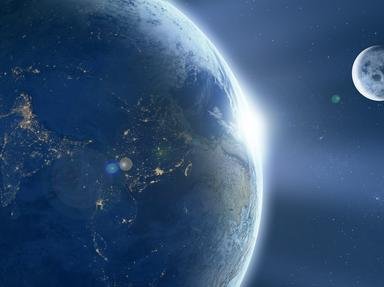Quiz Answer Key and Fun Facts
1. The two natural satellites of Mars were discovered by an American astronomer in August of 1877. Who was he?
2. The first of Mars' moons to be discovered was its outer moon, Deimos.
3. Deimos is an small, irregularly-shaped, moon with an orbital period nearly four times that of its brother Phobos. How long does it take for Deimos to orbit Mars?
4. There are two craters on the surface of Deimos named for authors who wrote about the existence of two Martian moons in their works (prior to their actual discovery). Who were they?
5. Just how small is Deimos? Its widest dimensions are 15 by 12.2 by 11 km, it has a surface area of 495.15 square km, and a volume of approximately how many cubic kilometres?
6. Phobos, the inner of the two moons, has a quick orbital period, rising and setting twice during the Martian day (taking 4.25 hours to cross the sky, beginning again 11 hours later). Unlike Deimos, Phobos rises in the west and sets in the east.
7. The Phobian surface is more pockmarked than that of Deimos. The most prominent feature is a large crater named Stickney. After whom was it named?
8. Phobos is closer to its planet than any other moon in the solar system is to their respective planets.
9. Because of Phobos' speed and its proximity to Mars, there is an effect that will eventually cause the moon to break up (in 30-50 million years). What is this effect called?
10. Phobos and Deimos have been photographed many times over the decades since the advent of space travel. Mariner 9 was the first spacecraft to send back close up photos of the two moons. In what year was this?
Source: Author
reedy
This quiz was reviewed by FunTrivia editor
rossian before going online.
Any errors found in FunTrivia content are routinely corrected through our feedback system.
